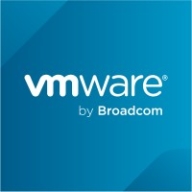

Find out in this report how the two Cloud Monitoring Software solutions compare in terms of features, pricing, service and support, easy of deployment, and ROI.
| Product | Market Share (%) |
|---|---|
| VMware Aria Operations for Applications | 1.9% |
| SolarWinds Hybrid Cloud Observability | 0.4% |
| Other | 97.7% |


| Company Size | Count |
|---|---|
| Small Business | 4 |
| Midsize Enterprise | 1 |
| Large Enterprise | 10 |
SolarWinds Hybrid Cloud Observability enhances IT operations with comprehensive visibility across hybrid environments for improved performance and uptime.
Providing a unified platform, SolarWinds Hybrid Cloud Observability allows IT teams to manage, monitor, and optimize both on-premises and cloud resources. It integrates seamlessly with existing tools, improving efficiency with robust data analytics and visualization. Its advanced features decrease time-to-resolution for system issues and help maintain system health.
What are the most important features of SolarWinds Hybrid Cloud Observability?SolarWinds Hybrid Cloud Observability is implemented across multiple industries like healthcare, finance, and manufacturing to ensure reliable performance and security of IT ecosystems. Its adaptability and comprehensive coverage make it a favored choice for enterprises managing both legacy and cloud-based infrastructures.
VMware Tanzu Observability by Wavefront is a powerful tool for monitoring and analyzing the performance and availability of applications and infrastructure in real-time.
With its comprehensive monitoring capabilities, visualizing and analyzing data becomes effortless. The real-time alerting system ensures timely issue resolution, while scalability and a user-friendly interface provide a seamless experience for smooth operations.
We monitor all Cloud Monitoring Software reviews to prevent fraudulent reviews and keep review quality high. We do not post reviews by company employees or direct competitors. We validate each review for authenticity via cross-reference with LinkedIn, and personal follow-up with the reviewer when necessary.